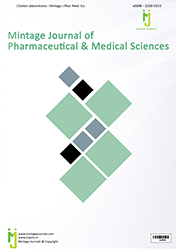NATURAL PRODUCT RESEARCH: UNVEILING THE TREASURES OF NATURE
Opinion - (2023) Volume 12, Issue 2
Introduction
Nature has been a profound source of inspiration and healing for humankind since time immemorial. The flora and fauna that surround us harbour a treasure trove of bioactive compounds that have the potential to revolutionize medicine, agriculture, and various industries. Natural product research is a field dedicated to unravelling the mysteries of these natural compounds and harnessing their potential for the betterment of society.
Description
The origins of natural product research can be traced back to ancient civilizations where healers relied on plants and other natural substances to cure ailments. Over the centuries, these traditional remedies paved the way for modern pharmacology and drug discovery. However, with the advent of synthetic drugs, the allure of natural products diminished, leading to a decline in research.
Yet, the tide has turned, and natural product research is experiencing resurgence. Scientists and researchers are rediscovering the immense value of nature’s offerings, driven by the need for new and effective drugs to combat emerging diseases and drug-resistant pathogens. Advances in technology and analytical methods have also accelerated the identification and isolation of bioactive compounds from diverse natural sources.
Plants, marine organisms, fungi, and bacteria are just a few examples of the vast array of organisms that serve as rich reservoirs for natural products. These compounds exhibit a remarkable diversity of structures, making them ideal candidates for drug development. One of the most notable examples is the discovery of penicillin, a breakthrough antibiotic derived from the Penicillium fungus, which revolutionized medicine and saved countless lives.
Natural product research plays a crucial role in drug discovery and development. Screening natural extracts or synthesizing analogs of natural compounds can lead to the identification of potential lead compounds for drug development. Additionally, natural products often serve as inspiration for the design of novel drugs with improved efficacy and reduced side effects. Moreover, natural product research extends beyond medicine. These compounds have the potential to provide solutions to challenges in agriculture, cosmetics, and various industrial processes. For instance, plant-derived natural products can be used as bio-pesticides to protect crops from pests, reducing the reliance on harmful chemical pesticides.
However, the road to harnessing the potential of natural products is not without obstacles. One significant challenge is the need for sustainable collection practices and conservation efforts to protect biodiversity. Overexploitation of natural resources can lead to the extinction of valuable species, thereby limiting our chances of discovering new bioactive compounds. Another hurdle is the isolation and characterization of active compounds from complex mixtures. Many natural products occur in minute quantities in their natural sources, requiring sophisticated techniques for extraction, purification, and structural elucidation.
Conclusion
In conclusion, natural product research is a testament to the wonders of nature and its ability to provide for us in extraordinary ways. By exploring and understanding the diverse range of compounds that nature offers, we open up a world of possibilities for new drugs, sustainable solutions, and a deeper appreciation of the natural world. Let us continue to delve into the richness of nature’s offerings and unlock the secrets that could shape a healthier and more sustainable future for generations to come.
Author Info
Fren Root*Received: 30-May-2023, Manuscript No. mjpms-23-108291; , Pre QC No. mjpms-23-108291(PQ); Editor assigned: 01-Jun-2023, Pre QC No. mjpms-23-108291(PQ); Reviewed: 15-Jun-2023, QC No. mjpms-23-108291; Revised: 20-Jun-2023, Manuscript No. mjpms-23-108291(R); Published: 27-Jun-2023, DOI: 10.4303/mjpms/236046
Copyright: This is an open access article distributed under the terms of the Creative Commons Attribution License, which permits unrestricted use, distribution, and reproduction in any medium, provided the original work is properly cited.

ISSN: 2320-3315
ICV :81.58

